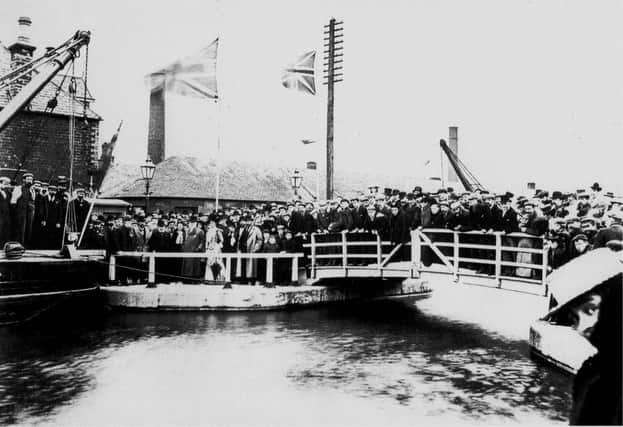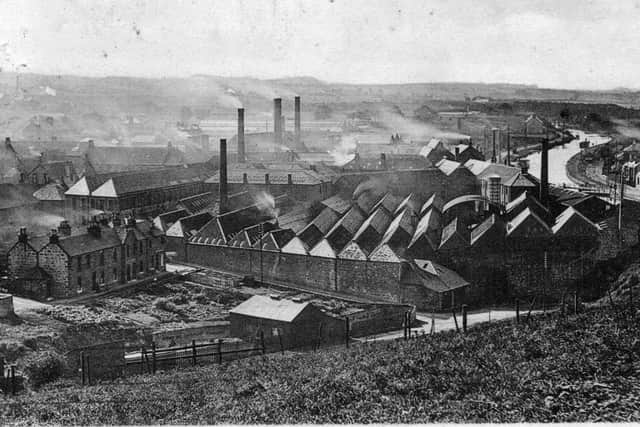The Bonny rivals who were able to bridge their differences - Ian Scott


But ‘love thy neighbour’ was not always the motto! Five hundred years ago when there was no bridge across the Bonny, two separate communities grew up within different feudal baronies facing one another across the river joined only by a ford. One was called Bonny Water and the other Water of Bonny and, as you might expect, there was a good deal of rivalry.
When the new Parish of Denny was created in 1601 it included the village on the north bank (Water of Bonny) leaving the southern group with Falkirk. Thereafter the folk went their different ways on a Sunday and paid their dues to their own religious masters. This didn’t change when the first bridge was built around 1680 but the name Bonnybridge appeared soon after and one imagines that the south and north began to merge around the same time. Of course there was a lot of activity going on long before this. For example in the grounds of Antonine Primary School are the remains of a ‘motte’, a fortified building dating to the 12th century which was no doubt the home of some powerful local laird. Not far away on the lower ground stood the ancient Chapel of St Helen with a burial ground which survived into the modern era.
Advertisement
Hide AdAdvertisement
Hide AdBut the real story of Bonnybridge began in the 1770s with the arrival of Great Canal linking the village to the rest of the country and the world. It took a while to make an impact but eventually industries began to appear. At first it was chemicals, then iron founding and the associated business of refractory brick manufacture using local fireclay.


The giant company formed by James Smith and Stephen Wellstood prospered from 1860 under the guiding hand of the ‘King of Bonnybridge’ George Ure whose former mansion of Wheatlands is now a care home for the elderly. George was one of the great men of the Falkirk iron industry and the Bonnybridge foundries were a huge success. For years the famous black enamelled bodies of Singer sewing machines were made in a special foundry and the stoves and ranges carried the Smith and Wellstood name to every corner of the world. Others followed like Lane and Girvan’s, the Chattan Stove Works and Broomside Foundry known as the ‘Puzzle’ because (or so I was told) they always had work even when the rest were in recession.
For well over a century the passage between north and south of the canal was via the famous ‘radical’ pend and it was not until 1900 that a wooden lifting bridge was installed. The folk were so happy that every man, woman and child turned up to see it opened and to test its strength!
Industrial decline dealt Bonnybridge a severe blow but the people are resilient and local pride shows itself in many ways, not least the activities of the very successful Greenhill Historical Society which has done fantastic work in unearthing and publicising the Bonnybridge story.
Advertisement
Hide AdAdvertisement
Hide AdAnd now as he ends his time as our Provost, a word of praise for the new King of Bonnybridge, Billy Buchanan, whose unlimited energy and enthusiasm has galvanised the community for many years. Long may he reign!
Comment Guidelines
National World encourages reader discussion on our stories. User feedback, insights and back-and-forth exchanges add a rich layer of context to reporting. Please review our Community Guidelines before commenting.